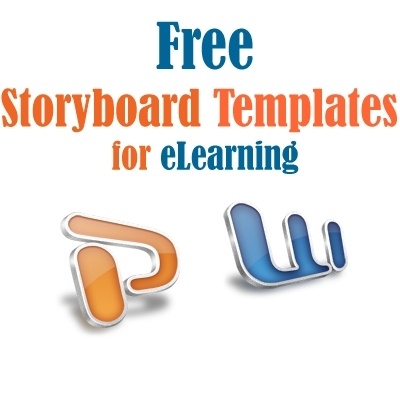Developing An eLearning Template: 7 Common Mistakes To Avoid
You’ve got all the knowledge in the world on your subject matter. But do you really know what it takes to build a sophisticated, absorbing eLearning course that carries your message? It’s all about the template. Building a well-designed, interactive, fluid eLearning course that challenges as it informs. You can’t just take your existing online training materials and paste them into your eLearning authoring tool. What works in real-world scenarios is not the same online. Don’t panic! Familiarize yourself with the top mistakes eLearning pros make when building eLearning templates. Avoid those, and your template will deliver an eLearning course that packs a punch!
1. Failing To Create A Unified Design
It’s all about smart design. Create a foundation that reinforces the message, and transfers knowledge, not just information. How do you decide on a visual design strategy you can commit to across any eLearning scenario? You need to think about structure:
- Use A Grid To Plan Out Your Visual Elements
Position text, navigation and images in a consistent format across your eLearning template. The eLearning course will be clear and simple to follow, and online learners will focus on understanding the content, not the tool. - Keep The Screen Clear, Using Graphics Only In Context (Not For Decoration!)
Keep text space tight to ensure messages are short and sweet.
2. Not Considering Responsive Design
Responsive Design means your eLearning template will perform as expected, whatever device your learner chooses. A travelling learner trying to complete the training will struggle if the navigation buttons aren’t functioning properly on their phone. It’s a hugely important consideration for your eLearning template. Think about your environment. Do you need to consider Mac users as well as Windows? Is everyone running the same OS version? Do you have a mix of Android and iOS in your mobile community? Robust testing with a range of online learners is the best way to ensure your template design is truly responsive.
3. Forgetting That Variety Is The Spice Of Life
Instructional Design is a broad field, but it has a simple message at heart: Design your eLearning course with the needs of the online learner at its core. Deliver an eLearning template that has a mix of visual devices that will appeal to different types of learners. Some want to watch a short video, then answer questions. Some need to take the time to read and digest a block of text. Others might want a cartoon-style series of relevant images and concise thinking points.
Building in a mix of visual, media and interactive elements to your eLearning template will help deliver an interesting and impactful eLearning course. If you don’t have your assets at-the-ready, use descriptive placeholders to denote their spot in the eLearning template.
4. Choosing The Wrong Tool
Warning: Don’t feel you need to use every available feature when building your eLearning template! Over-use of features will create an eLearning template that is hardly usable. It will be confusing, cluttered and unclear. Better to focus on the elements within the package that provide the best structure, and clearest navigation features. Alternatively, if your eLearning tool is old, clunky and outdated, your eLearning template will have the same problems! Build a business case for investment in a modern eLearning tool by demonstrating the benefits of a well-designed online training program.
5. Ploughing Ahead Without Testing
Test, test and test again when you’re developing your eLearning template. Using a range of online learners, evaluate the success of the eLearning template and then tweak what’s not working well. Gather feedback about style and ease of use through a solid testing phase. Don’t skip it! It’s vital to the success of any eLearning course. You can test the eLearning template waters with focus groups or even live events. Showcase the newly minted layouts and then ask learners’ opinions. Then use the data to perfect your eLearning template design.
6. Ignoring The Requirements Of Your LMS
Keep your LMS in mind for tracking progress against targets, from the outset of your eLearning template design. You must build in space for clearly-described learning objectives. You will also need to ensure understanding so that delivery of the eLearning course can be assured. The most effective way to monitor learning progress is interactive, quiz elements. You will also be required to provide a distinct completion certificate at the end in the case of compliance tracking.
7. Not Reusing Existing Assets
You may already have a broad range of elements you can incorporate into your reusable eLearning template, such as images, graphics, and other visual components that will enrich the aesthetics and improve learner engagement. Then you won’t have to perfect the eLearning template when it’s time to upload the subject matter and online training activities. This also helps keep costs low, since you’re repurposing materials you already had in your database. Your rapid authoring tool library is also a great place to check for the visual building blocks of your eLearning template.
Seven easy mistakes. Seven opportunities to create a more impactful layout that saves time and money! Whether you’re building your first eLearning template or your fiftieth, the principles of good design are so important. Overusing features, displaying meaningless images and failing to test shows that the learner isn’t at the heart of your online training. Think about the eLearning template you’re working on. Does it have a grid structure? Does it allow for a variety of visual and interactive elements? Does it work on any screen? If the answer is no, then now’s the time to go back to basics and get your impact right, every time.
You might have great eLearning content, but is it being overshadowed by outdated eLearning templates? Wondering how to develop reusable eLearning templates from scratch? Do you know the essential elements of an effective eLearning template? Are you making the most out of your existing eLearning templates? Download our free eBook eLearning Templates From A To Z to find out how to choose the right eLearning template for your eLearning course, how to create a reusable eLearning template from scratch, its essential elements, as well as how to refresh outdated eLearning templates on a budget.






